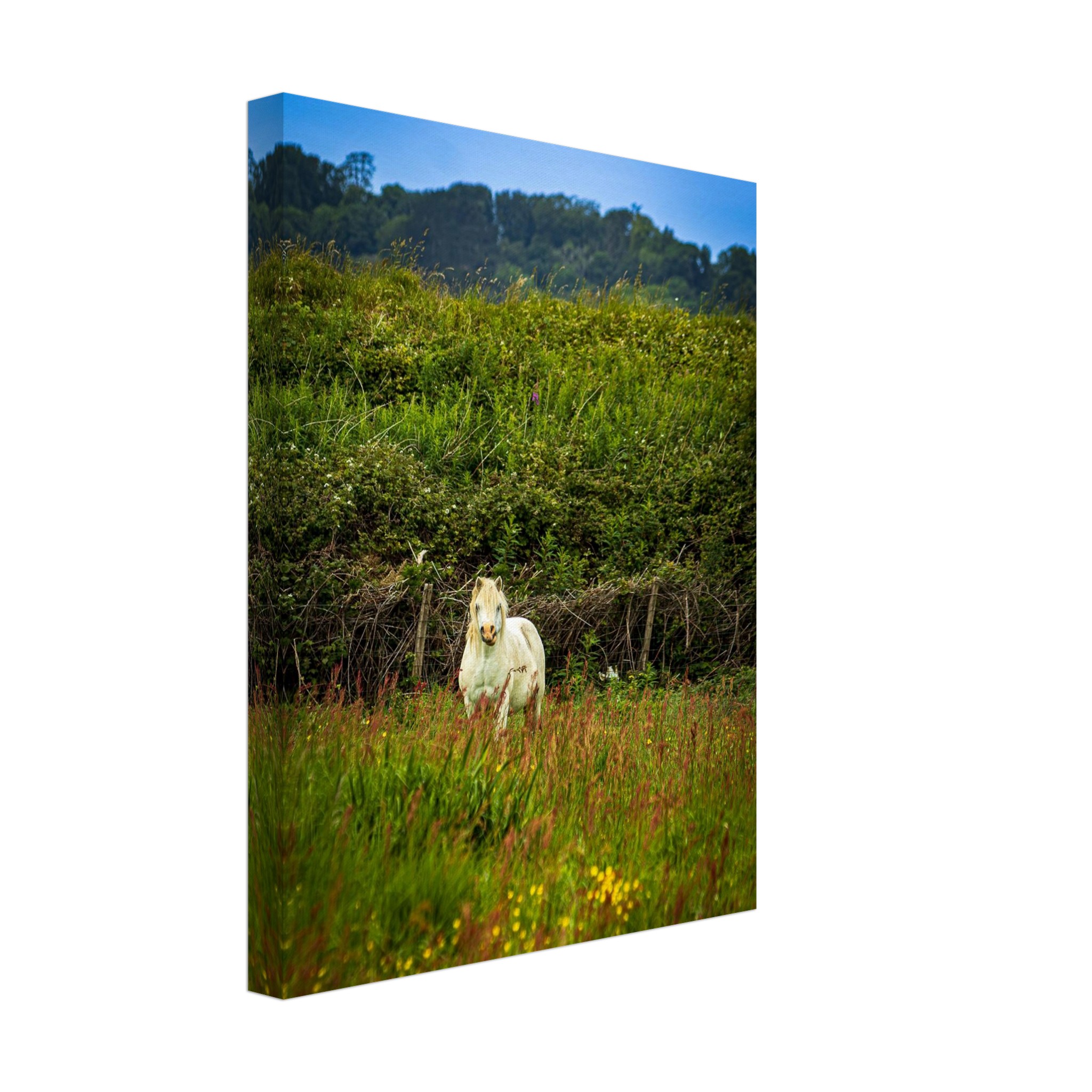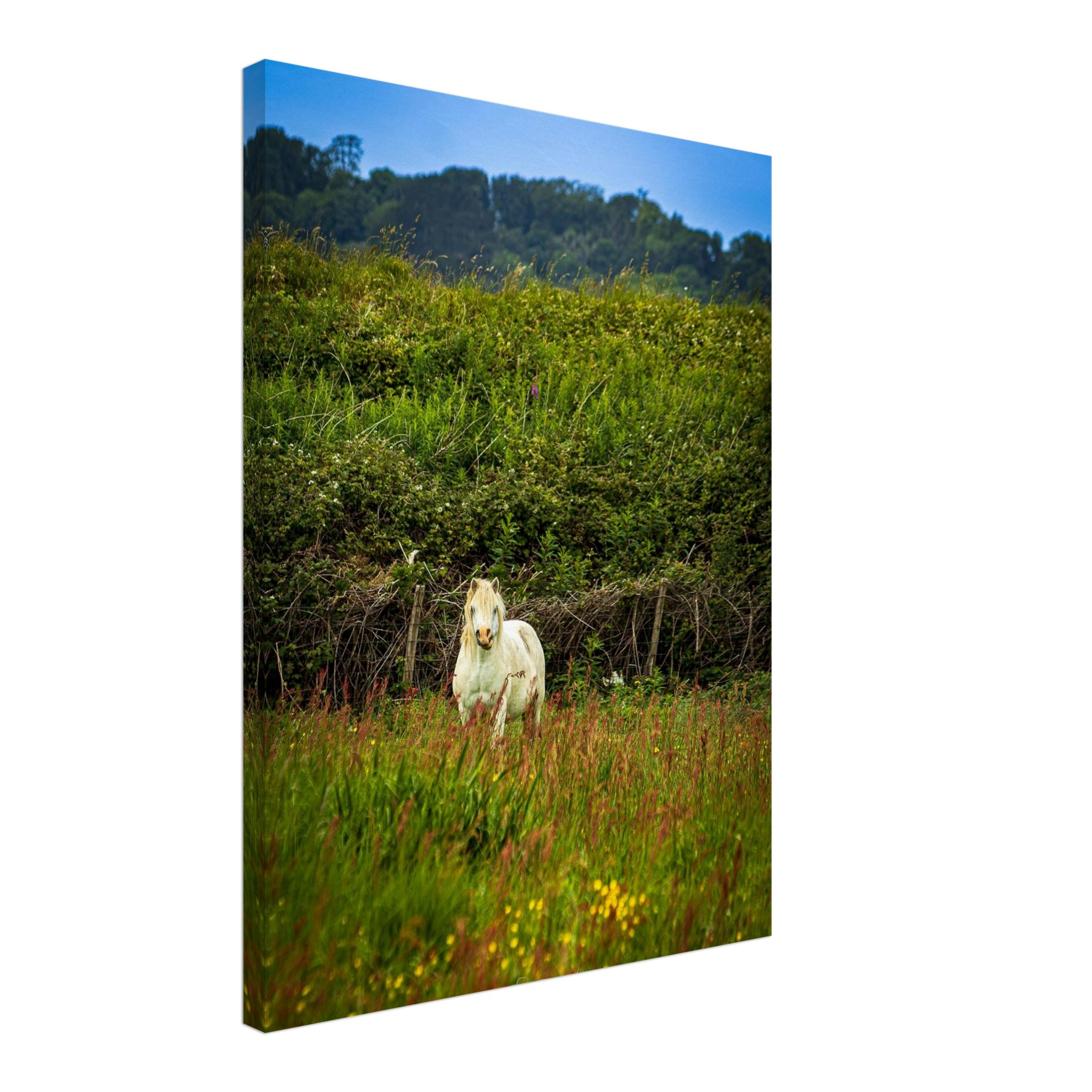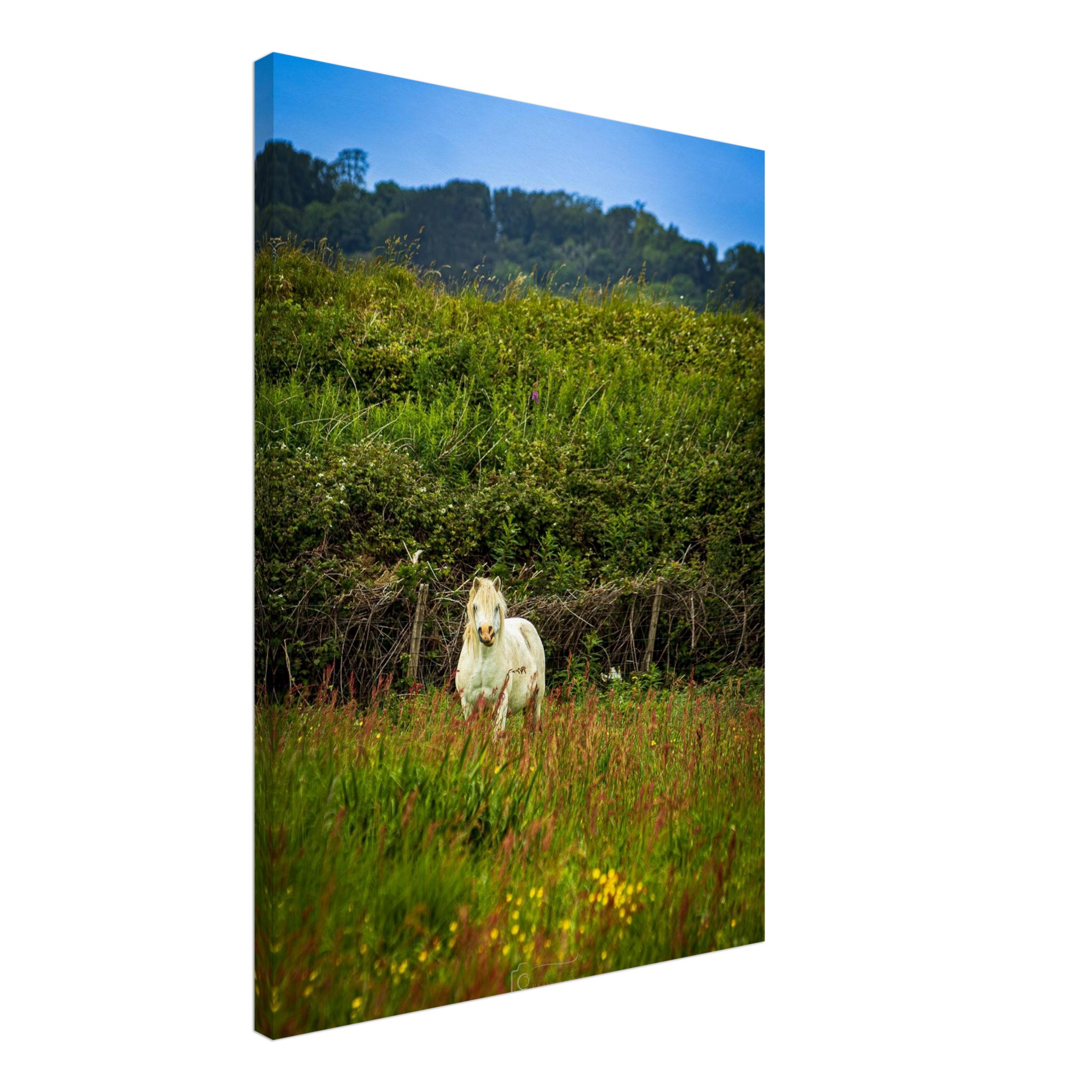Description
To understand the White Welsh Pony better, it’s essential to distinguish between genuinely white ponies and those that appear white due to other colour mechanisms. A truly white pony possesses a unique genetic mutation known as the dominant white gene. This mutation results in a pony that is born with a pure white coat, characterized by soft, white hair and pink skin. The most remarkable feature of a true white pony is that from the moment it is born, it exhibits a uniform white coat, with no dark or coloured markings, and its skin remains pink underneath the hair. These ponies are born with this colour and tend to retain it throughout their lives, as the gene is invariably expressed strongly.
In contrast, most ponies that look white are actually grey—a much more common colour within the Welsh breed, especially among Welsh Mountain Ponies classified as Section A. Grey ponies are born with a darker coat, often liver or black, and their hair gradually lightens over the years as they age, a process known as progressive greying. Importantly, underneath the lighter hair, their skin remains dark—usually black or dark brown—regardless of how light their hair becomes. This gradual lightening can sometimes make the pony look nearly white in old age, which often leads to confusion amongst observers who may assume such ponies are genuinely white.
Beyond the simple grey coloration, other genetic factors can independently cause ponies to develop white or near-white appearances. One such cause involves the sabino gene, a dominant gene responsible for extensive white markings and sometimes more complex patterns such as roaning, splashes, or irregular white spots across the body. When a pony inherits the sabino gene, it might display a predominantly white coat with distinctive markings, which could be mistaken for pure white. When the sabino gene is inherited in a strong form, sometimes called “sabino-white,” the pony can appear completely white, especially if it carries two copies of the gene—one from each parent. These genetic expressions can vary in intensity, but they often produce beautifully striking horses with large areas of white.
Another genetic factor is the splashed white gene, which causes ponies to develop large, irregular white markings that appear as if they have been dipped or splashed in white paint. Ponies with the splashed white gene tend to have a characteristic appearance: a predominantly white or dipped-in-white look, often with minimal colour on the head and limbs. The White Welsh Pony generally have pink skin beneath the white markings and frequently possess vivid blue eyes, adding to their striking appearance. The splashed white gene can sometimes confer an ethereal, almost ghostly look, contributing to the mystique of the so-called “white” Welsh ponies.
It’s also important to understand that true dominant white Welsh ponies—those that are consistently born with a fully white coat and pink skin—are exceedingly rare and highly valued for their rarity. When encountered, they are distinguished by their precise genetic makeup and the fact that they show no signs of any greying process; they are born with disconcertingly pure white coats and do not age into grey. These ponies truly exemplify the rarest colour phenotype and often capture the imagination of breeders and enthusiasts alike.
However, it’s noteworthy that purebred Welsh registries often have strict standards regarding coat colour, particularly when it comes to white markings. Many registries reserve the umbrella term “white” for ponies with the specific genetic traits of the dominant white mutation, rather than those simply appearing white due to grey or extensive markings. Excessive white markings from mutations like that of the dominant white gene or sabino patterning may sometimes lead to disqualification or be classified separately as part of colourful or spotted varieties rather than as pure white types.
In summary, while the phrase “White Welsh Pony” evokes a regal and enchanting image, true white Welsh ponies are a rare genetic phenomenon resulting from complex inheritance patterns. Most ponies that seem white are actually grey or carry other white-patterning genes that produce the illusion of purity. Understanding the nuances behind the genetic factors, such as the dominant white gene, sabino gene, and splashed white gene, helps clarify the discrete differences between genuinely white ponies and those that simply appear to be. These colourful distinctions highlight the deep richness of Welsh pony genetics and remind us of the fascinating diversity within this historic breed.





